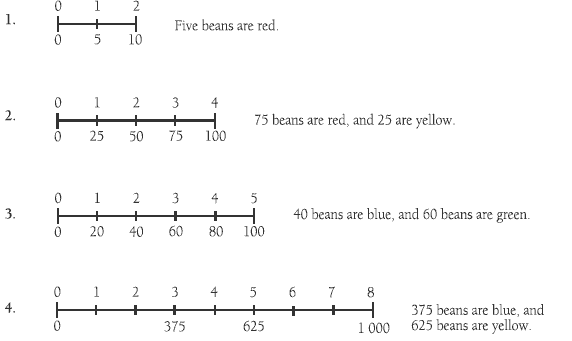This is a level 4 number activity from the Figure It Out series. It relates to Stage 7 of the Number Framework.
A PDF of the student activity is included.
Click on the image to enlarge it. Click again to close. Download PDF (332 KB)
find equivalent proportions
FIO, Level 3-4, Number, Book 1, Bean Brains, page 9
Coloured beans or multilink cubes
A classmate
Students can solve these problems by writing fractions. For example, in question 1, half of the beans are red (1/2 of 10 = 5), and in question 2, three-quarters of the beans are red (3/4 of 100 = 75).
In question 5, the students need to recognise that 3 will not divide evenly into 10, 100, or 1 000, and so there cannot be exactly one blue bean and two orange beans out of every three beans.
This concept is important when students come to write fractions as decimals because it helps to explain why 1/3 is expressed as a recurring decimal (1/3 = 0.3).
Setting the information out in tables can help solve these problems. For example, for question 3:
Find the number that 5 is multiplied by to get 100 (20).
Now complete the table by multiplying the other numbers in the table by the same number:
An easy way to solve this problem is to use double number lines.
Answers to Activity
1. 5
2. 75 red, 25 yellow
3. 40 blue, 60 green
4. 375 blue, 625 yellow
5. a. He is wrong because none of the jars’ contents can be divided equally into
groups of 3.
b. Multiples of 3. The closest to the numbers already in the jar would be 9 beans,
99 beans, and 999 beans.



